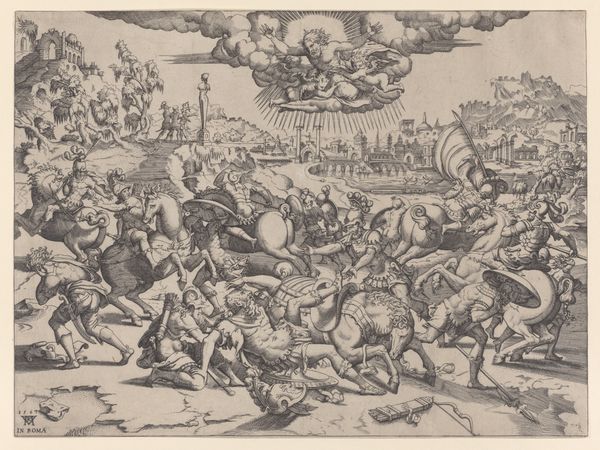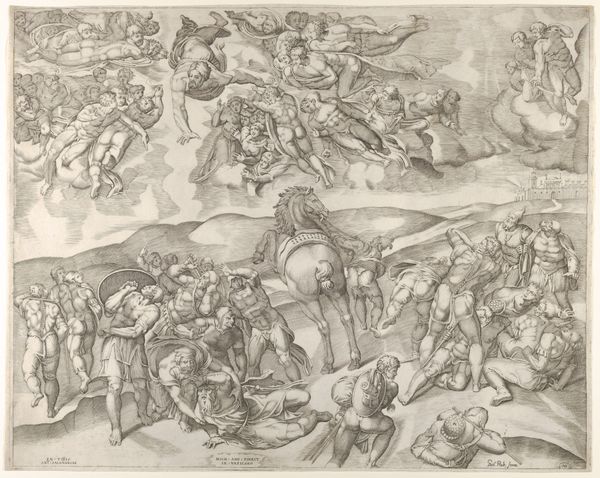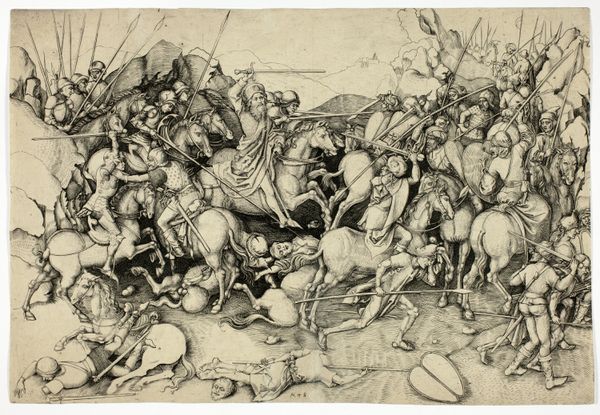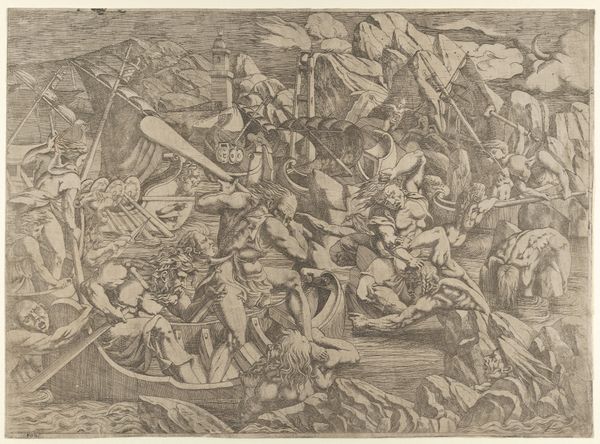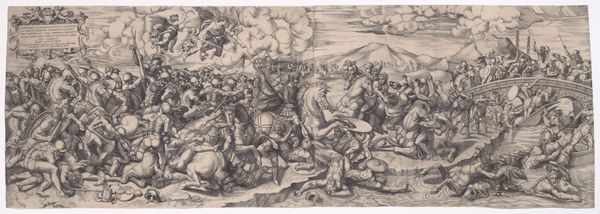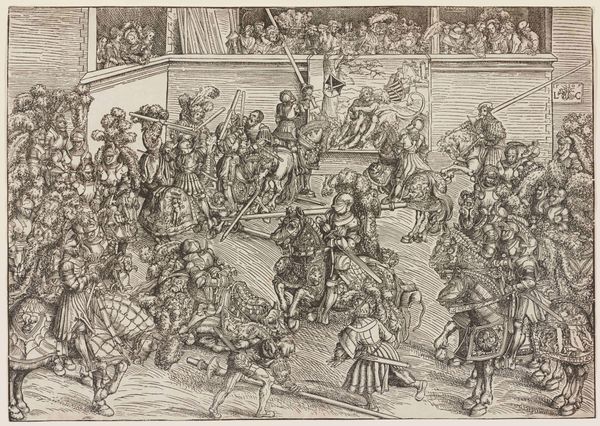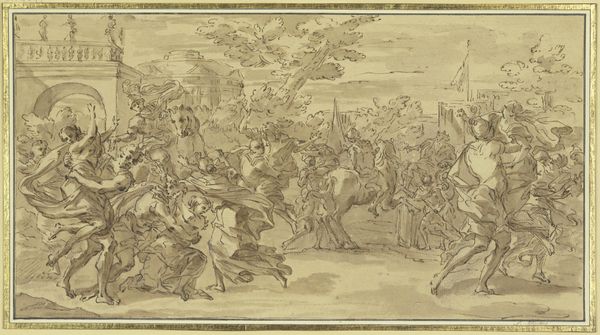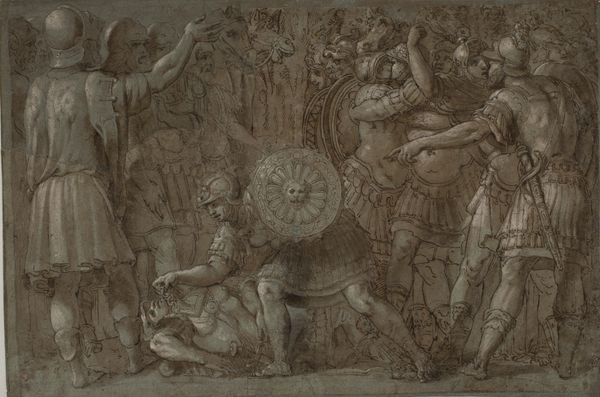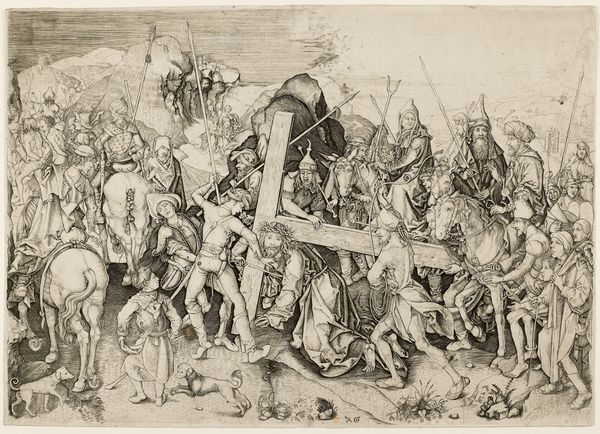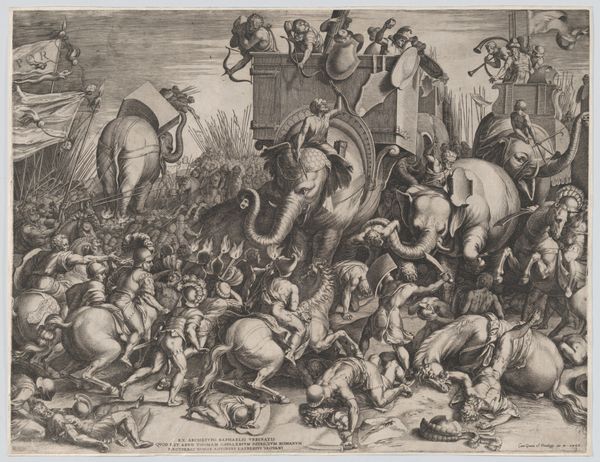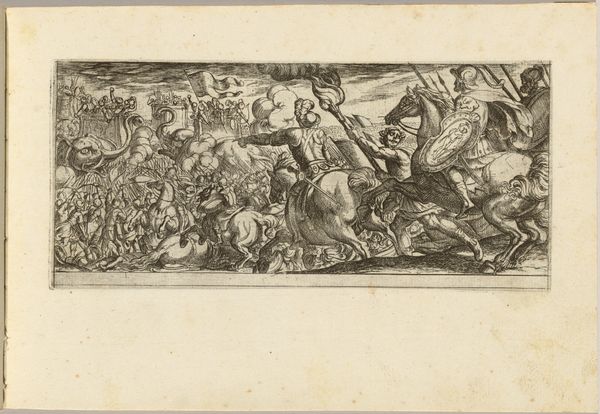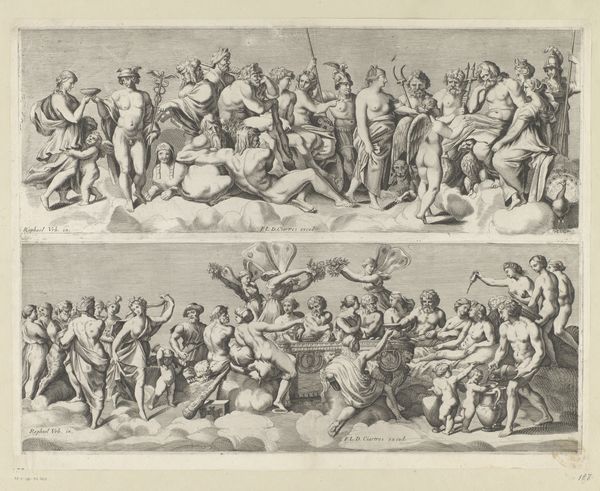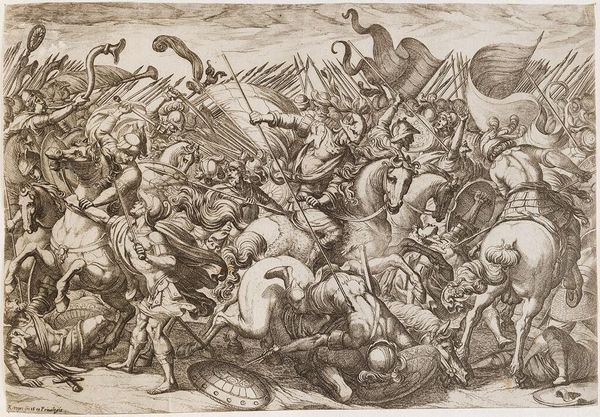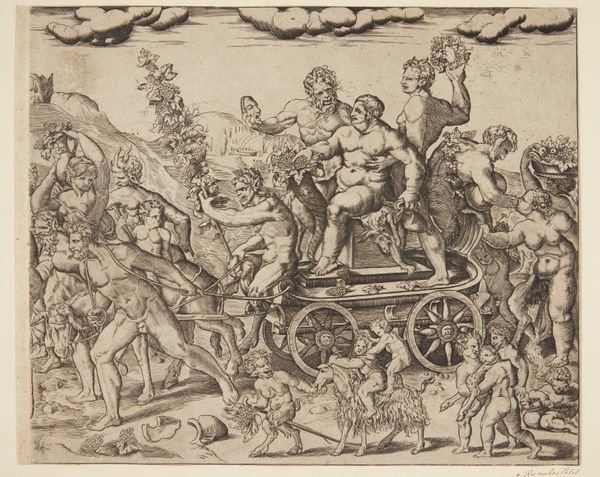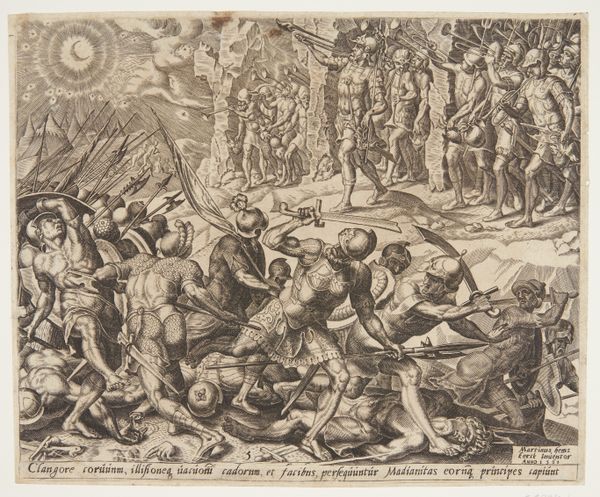
tempera, painting
#
narrative-art
#
tempera
#
painting
#
landscape
#
figuration
#
history-painting
#
academic-art
#
italian-renaissance
#
italy
Dimensions: 15 7/16 x 59 7/16 x 1/4 - 3/4 in. (39.21 x 150.97 x 0.64 cm) (panel)
Copyright: Public Domain
Editor: So, this tempera painting, "The Battle of Zama," from around 1470, really strikes me. It’s chaotic, a flurry of figures and horses. What's your take on its depiction of conflict? Curator: It’s interesting to consider this depiction within its historical context. The Renaissance fascination with classical antiquity often served to legitimize contemporary power structures. How might a glorification of a Roman victory function in 15th-century Italy, where power was so fragmented and often contested? Editor: That makes me think about the kind of power being emphasized here. Is it about military strength, or something else? Curator: Exactly! The artist's choice to depict this particular battle invites us to think about the justifications for conflict, and about who benefits from these narratives. Notice how the artist focuses less on the violence itself and more on the spectacle. This aligns with the Renaissance courts desire to create powerful visual representations of authority through historical allegories. Do you think that downplaying the brutality helps to further ennoble war itself? Editor: I think it maybe does? By focusing on the order and glory, it definitely hides the actual cost. So, viewing it through this lens, this painting isn’t just a historical depiction; it’s actively constructing a specific narrative about power and its justification. Curator: Precisely. It compels us to consider art as a tool for reinforcing or questioning dominant ideologies, then and now. Editor: I see now, the painting does much more than show a historical battle. It tells a very political story. Thank you! Curator: And thank you, that deeper look highlights the crucial connection between art and social structures, and reminds us to question what any artist may attempt to glorify.
Comments
minneapolisinstituteofart almost 2 years ago
⋮
The Battle of Zama (202 B.C.E.), near Tunis, marked the final victory of the Roman general Scipio against the Carthaginians, led by the military commander Hannibal. Hannibal made use of the African elephants (here on the left), considered an unbeatable weapon, but the Romans had learned how to overcome their strength and aggressiveness with the piercing noise of long trumpets that scared the beasts and scattered the enemy’s ranks. Apart from these details known from Livy, no other element in the panel respects the historical setting. Instead of the desert plains of North Africa, the landscape shows the familiar Tuscan hills capped by towered villages, with ramparts, churches and bell towers, and even Carthage (on the left) is represented as a walled medieval city with drawbridges. Moreover, the soldiers’ armor is typical of 15th century military garb. Some knights wear feathered helmets and the footmen have two-colored britches. The scene evokes a historical fact, but everything is conceived in order to be understood by different audiences within the family: the husband, more learned in ancient history; the wife, who would at least be familiar with the scenery represented; and the children playing on the floor in front of the chests. For them, this was a pleasant way to learn the stories of Antiquity.
Join the conversation
Join millions of artists and users on Artera today and experience the ultimate creative platform.
